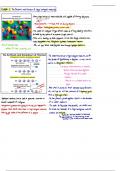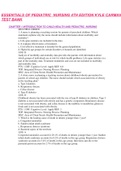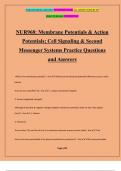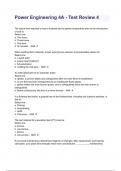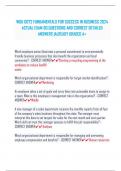Class notes
Hunter College- Biol 100 Samantha Sheppard-Lahiji : Chapter 5: The Structure and Function of Large Biological Molecules Notes
Comprehensive and detailed notes covering Chapter 5 of Biology 100 at Hunter College. Perfect for students seeking a deeper understanding of the material. Based on Professor Sheppard's slides - Everything said in her voice recordings is written in my notes!
[Show more]
